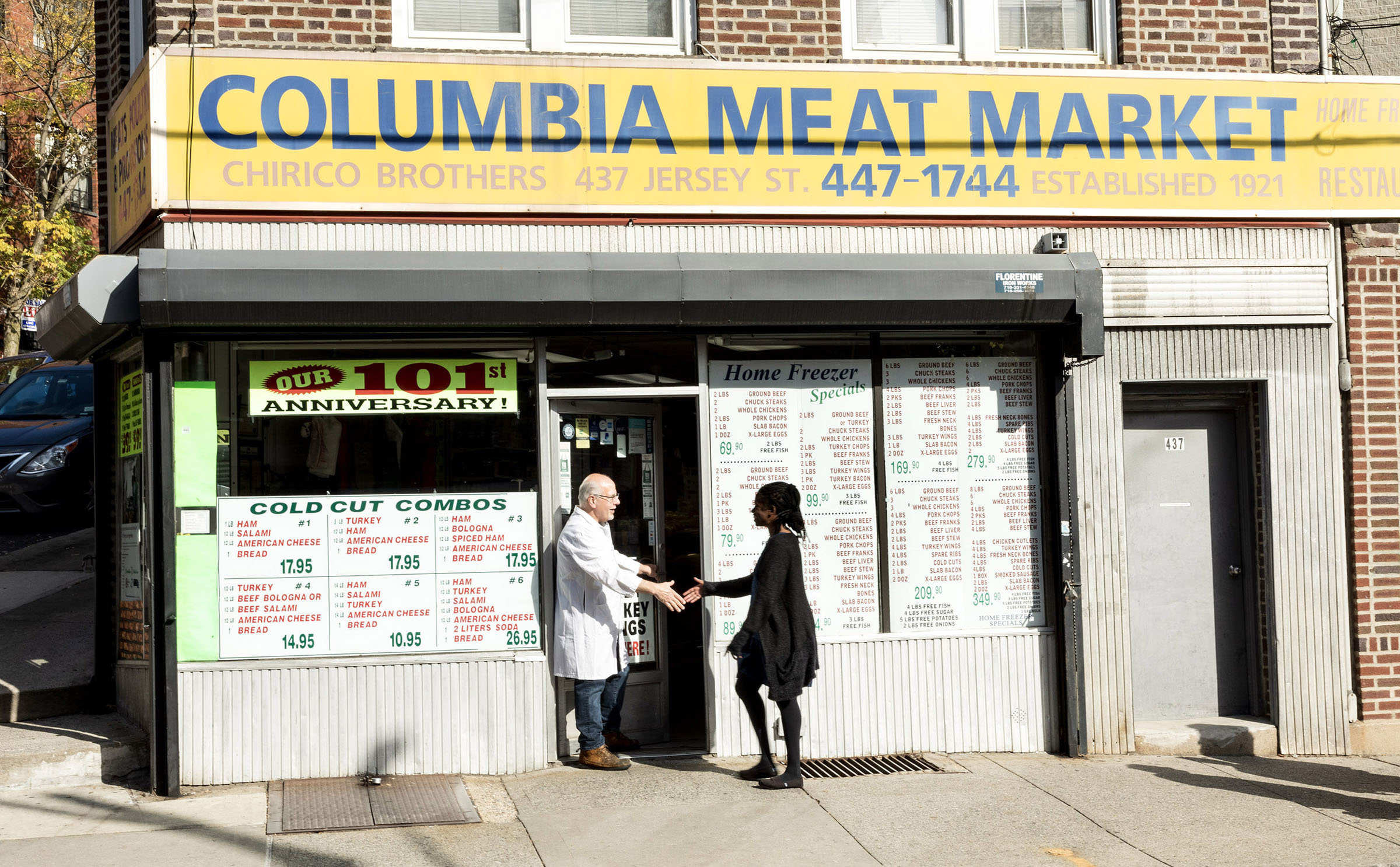LED BY A COLUMBIA UNIVERSITY PROFESSOR AND HER TENACIOUS STUDENTS, THIS GROWING INITIATIVE IS EXPANDING HEALTHY FOOD ACCESS IN STATEN ISLAND’S UNDERSERVED NEIGHBORHOODS ONE CLEMENTINE AT A TIME BY AMANDA McCOY PHOTOS
BY AMESSE PHOTOGRAPHY

In any given day inside Columbia Meat Market, a locally owned butcher shop and bodega in New Brighton, shoppers will find a kiosk of fresh fruits or vegetables located near the entrance. Sometimes it’s filled with sweet potatoes, other times squash, turnips, or clementine’s, but no matter the day’s offerings, the produce is always free to take. The market is one of six NYC outposts of the Clementine Collective, a community-galvanizing fresh foods initiative dedicated to expanding access to healthy food options in high-need areas, also known as food deserts. The program launched early in the COVID pandemic, led by a group of Columbia University students and their professor, Heather Butts, JD, MPH, MA. Today, the collective’s partner stores distribute hundreds of complimentary fresh fruits and vegetables every week.
According to the US Department of Agriculture, a food desert is a low-income neighborhood that distinctly lacks supermarkets and grocery stores. Its residents often rely on small corner stores and fast food restaurants for food access, which typically lack healthy options. The idea for the Clementine Collective took shape in March 2020 as an opportunity to bring fresh fruits and vegetables to these disadvantaged neighborhoods.

“The idea came from one of my students,” said Butts, an assistant professor at Columbia University School of Public Health and longstanding advocate for underprivileged youth in NYC. In one of her courses, the Integration of Science and Practice, students were encouraged to brainstorm initiatives that could improve population health. A student suggested stocking bodegas in low-income areas with a small amount of healthy produce, and making it free for anyone who comes in the store. “This was March of 2020, and I had a feeling the situation surrounding food was going to get really rocky over the next few months,” noted Butts.
With the help of her students, she set out to launch the program, choosing clementine’s as the marquee offering for their sustainability, portability, and natural wrapping an important factor during the pandemic. One month later, the collective set up its first kiosk, featuring a bushel of 25 clementine’s per day. “A few weeks later, we needed to increase that number to 50,” said Butts.

Today, the collective is a robust operation, providing hundreds of pounds of vegetables each week to its six partner stores, and supported by several community institutions like Staten Island University Hospital, Staten Island Partnership for Community Wellness, Columbia University Medical Center, the Office of Assembly member Charles Fall, and Long Island University. Today, they offer recipes and cooking tips alongside the complimentary produce, and recently launched a celebrity chef project featuring spots from culinary greats like the James Beard Award-winning Mashama Bailey and chef/cookbook author John O. Morisano.
“Many community organizations have demonstrated tremendous support,” said Butts. “SIUH, for example, has not only helped us secure funding to continue supporting the stands (each stands costs approximately $100 per week, she noted), but they’ve also connected us with community healthcare workers to support our research projects, which gives us insight into how many people are utilizing the stands, their reaction, and how we can improve moving forward.”

Butts described the community support as “overwhelmingly positive,” but noted the collective never could’ve gotten off the ground without store partnerships. During the early days of the program, she said the team received several “no’s” from bodega owners.
“We approached several corner stores to ask if they were interested in participating, and we received quite a bit of pushback in the beginning. The owners believed we would be eating into their non-healthy food business. Many also thought their customers wouldn’t be interested in fruits and vegetables, that the produce would just sit there and rot.”
But when Vincent Chirico caught wind of the collective’s efforts through a regular customer (a nurse at SIUH), he immediately contacted Butts to participate.
“We thought it was a good idea for the community,” he said. “At the time, our neighborhood was mostly a dead zone for fresh produce, fruit especially, and we partnered with the collective to not only supply these items, but to help people with recipes and recommendations. The biggest help in the beginning were the children. They would come into the store and immediately grab a clementine, and at that point we knew we were moving in a positive direction.”
Chirico noted that prior to the collective, his store was already selling a small amount of vegetables, but rather than eat into his profits, the complimentary produce encouraged shoppers to purchase accompanying items, such as onions or squash. And if a customer especially a child stops by merely to pick up a clementine, he doesn’t mind at all.

“The greatest part of this experience is watching the children come in and grab clementine’s instead of a bag of chips or candy,” he said. “We’re putting them on a healthy path, even if they don’t fully grasp that yet.”
In addition to serving as a philanthropic initiative, the Clementine Collective is also a behavioral case study. Butts believes the reason residents in low-income areas typically don’t consume healthy foods is not for lack of interest, but lack of access. Through the collective, she hopes to encourage local markets to make the choice to put fresh, healthier foods on their shelves, benefitting not only their businesses but the community at large.
“There’s a myth that the people who live in underserved areas, where there’s fast food on every corner, only want salty, processed, unhealthy foods,” said Butts. “But people living in these areas simply don’t have access to healthier options. They are merely consuming what is available to them. It becomes circular. Our ultimate goal is not to continue giving out free clementine’s each week, but to show store owners and wholesalers in areas in need that if they put fresh fruits and vegetables in their store, their customers will purchase them.”
The Clementine Collective
